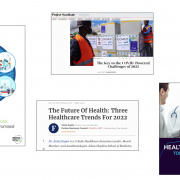Vithas: the second private hospital operator in Spain, with the vocation of being the first

On December 15, 2022, within the series “Breakfasts with health sector leaders“, organized by Roland Berger, a breakfast with Pedro Rico, General Director of Vithas, took place.
A summary of the breakfast content is as follows:
The origins
The Vithas group was officially presented on November 21, 2012, now celebrating the 10th anniversary of its origin. At that time, the group had 1,000 beds in 10 hospitals located in Madrid, Vigo, Alicante, Almería, Granada, Málaga, Lleida, Vigo, Vitoria, Las Palmas and Tenerife. Regarding its billing figures, the group reached 196 million euros.
At the beginning, the property was owned by the Goodgrower Group, linked to the Gallardo family, which held 80% of the shares and Criteria, with 20%. Subsequently, Goodgrower acquired the participation of Criteria, going on to hold 100% of the shares. From the beginning, the Presidency of Vithas has been in the hands of Jorge Gallardo Piqué.
A growth story
In 2014, Vithas incorporated the Xanit Internacional hospital (Benalmádena).
This same year, the Vithas Salud centers were created, designed as local specialty centers without hospitalization, and the Vithas Salud Fisium centers were incorporated in the province of Pontevedra.
In 2015 the group signed a strategic agreement with the Juaneda Assistance Network (Baleares). That year the new Vithas hospital was inaugurated in Granada and the five centers of the Rincón Clinics in the province of Malaga were acquired. The Lema and Bandín laboratories joined the Vithas group, renamed Vithas Lab.
In 2017 the expansion of the group gained new impetus with the acquisition of the 7 hospitals that made up the NISA group. This operation, together with the hospitals of Almería and Málaga and the shareholding agreement with the Juaneda Assistance Network, positioned Vithas as a leader in private healthcare throughout the Mediterranean arc
Growth continues in 2018 when the group takes another step towards the incorporation of highly specialized centers such as the Eurocanarias Ophthalmological Institute.
In January 2020, the group acquired the emblematic La Milagrosa hospital, located in the center of Madrid, consolidating the group’s presence in this city, where it already had two other hospitals, 1 specialty center and Vithas Internacional.
Vithas during the pandemic
During the pandemic, the group is 100% involved in patient care and actively collaborates with the authorities to deal with the health crisis, of course applying the corresponding internal protocols to ensure the safety of professionals.
It is worth highlighting two relevant initiatives in this field: the so-called Aerobox, a portable device for individual isolation of patients that prevents the transmission of the virus; and the solidarity project with other companies and institutions to develop OxyVita, an efficient and low-cost emergency ICU ventilator, which has been made available to all hospitals and health systems in the world in open source and free of rights.
Digital transformation as an integration tool
Since January 2020, the group has been promoting its digital transformation through the implementation of a new IT tool.
The idea is to overcome the old pre-existing hospital culture and move towards what is called Vithas one, in such a way that it has:
- unique data
- Single electronic medical record
- single database
- A centralized contact center
The will to create a centralized access for patients, gave rise to the launch in 2020 of a centralized contact center, as a high-performance center, where more than 120 operators work, understood as a strategic pillar of quality improvement. , recruitment, loyalty and customer satisfaction.
Impulse to Vithas diagnosis
In 2020, Vithas Diagnosis was launched, with an offer in clinical laboratory, imaging and pathological anatomy, with the idea of centralizing all of the company’s diagnostic activity and, at the same time, providing services to third parties.
My Vithas
This project tries to build the foundations of the digital experience for Vithas patients, incorporating the web and an app.
The result by 2022 is that there are already 669,034 digital users and 631,749 online appointments have been managed. At this moment, 14.6% of the group’s transactions are online.
New projects
Vithas’ desire for growth continues in 2022 with the construction of a new hospital in the province of Barcelona (where until now it had no presence), and another hospital in the south of Valencia, the third in this city. Both will mean a joint investment of more than 90 million euros.
During 2022, the Vithas Salud Gibraltar and Vithas Salud Alzira centers were inaugurated, as well as the expansion of the Vithas Madrid Arturo Soria surgical unit and the completion of the expansion of Vithas Xanit Internacional, which doubles its care capacity on the Costa del Sol.
Mainstreaming of specialties
This work was preceded by a definition of the Clinical Care and Governance Model of the strategic specialties.
After the launch of the Vithas Cardiovascular Institute, the Vithas Neurosurgery Unit and the Vithas Oncology Institute were created, adding to all the existing benefits a transversal and comprehensive assistance service specialized in each of these three major therapeutic areas.
The idea for the future is to boost the growth and activity of the institutes in operation and to promote research, as well as to continue with the territorial expansion of the Institutes model.
A great concern for quality
Quality is the central axis of the entire Vithas strategy. Apart from accreditation by the Joint Commission International, the patient experience is a core element of the “Vithas culture“. There is a Director of Patient Experience.
Vithas people
Based on the confirmation that professionals are the most important asset of Vithas, the aim is to promote a patient-focused organization that cares for its professionals.
For this, the approach is to offer future projects, internal promotion, training and recognition policies, with specific training plans (eg, IESE executive leadership, Master of Nursing).
Vithas’ university vocation
As a sign of its commitment to the training and development of healthcare talent, in November 2022, the three centers in Madrid (Vithas Madrid Arturo Soria, Vithas Madrid Aravaca and Vithas Madrid La Milagrosa) are accredited as university hospitals.
Vithas and research
As a sign of concern for research, the Vithas Foundation is promoting scientific publications, with an impact factor that grows every year, as well as conducting commercial clinical trials, the number of which also increases every year.
The “new” Vithas
During this time the appearance of Vithas has completely changed, the number of beds, ICU positions, internal consultations and surgical interventions have doubled; the volume of business, professionals and operating rooms has tripled; and the number of centers and patients attended has quadrupled.
But, apart from these quantitative data, there are other qualitative ones, no less important:
- Concern for quality and patient experience
- The promotion of the university character and teaching and research
- digital transformation
- The integration process of differentiated cultures
- The “mainstreaming” of specialties, through the Institutes
- The offer of a growth project to its professionals
That is why it is not hyperbole to speak of a new Vithas.





















